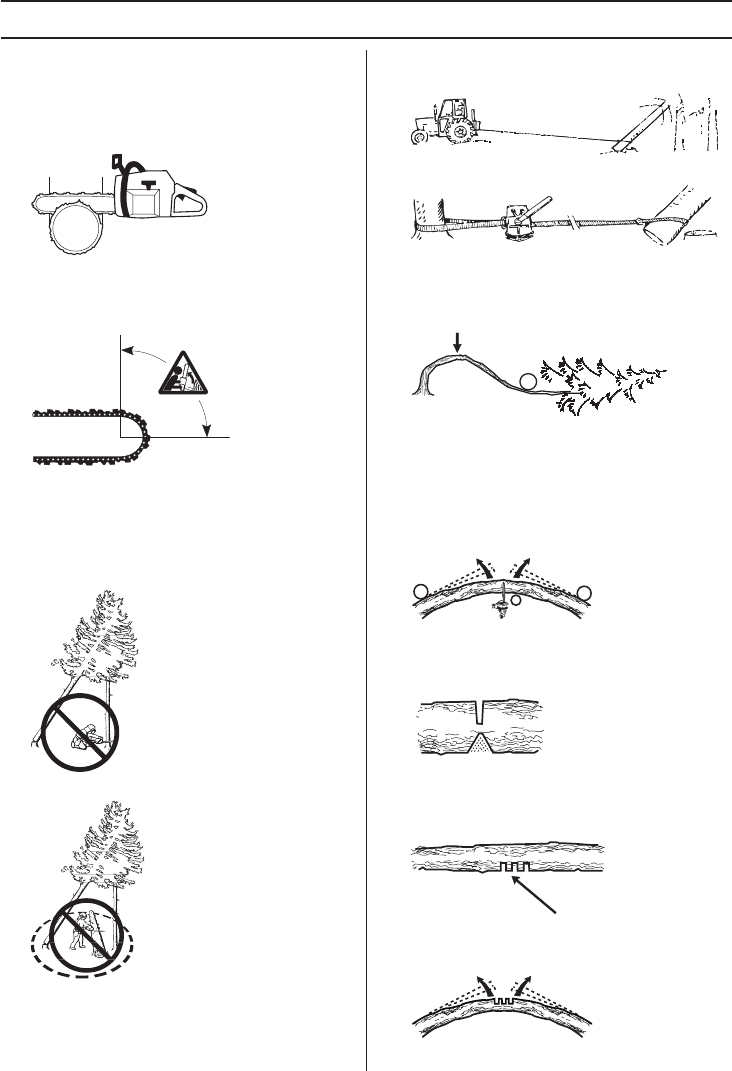
WORKING TECHNIQUES
28 – English
We recommend that you use a bar that is longer than the
diameter of the tree, so that you can make the felling cut
and directional cuts with single cutting strokes. See
instructions under the heading Technical data section to
find out which lengths of bar are recommended for your
saw.
There are methods for felling trees with a diameter larger
than the bar length. However these methods involve a
much greater risk that the kickback zone of the bar will
come into contact with the tree.
Freeing a tree that has fallen badly
Freeing a ”trapped tree”
It is very dangerous to remove a trapped tree and there is
high accident risk.
Never try to fell the tree that is trapped.
Never work in the risk zone of the hanging trapped tree.
The safest method is to use a winch.
• Tractor-mounted
• Portable
Cutting trees and branches that are in tension
Preparations: Work out which side is in tension and where
the point of maximum tension is (i.e. where it would break
if it was bent even more).
Decide which is the safest way to release the tension and
whether you are able to do it safely. In complicated
situations the only safe method is to put aside your chain
saw and use a winch.
General advice:
Position yourself so that you will be clear of the tree or
branch when the tension is released.
Make one or more cuts at or near the point of maximum
tension. Make as many cuts of sufficient depth as
necessary to reduce the tension and make the tree or
branch break at the point of maximum tension.
Never cut straight through a tree or branch that is in
tension!
If you must cut across tree/limb, make two to three cuts,
one inch apart, one to two inches deep.
Continue to cut deeper until tree/limb bends and tension
is released.
Cut tree/limb from outside the bend, after tension has
been released.


















